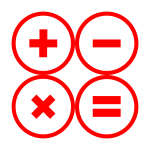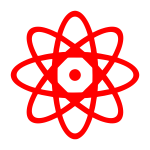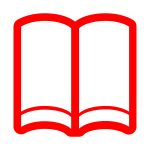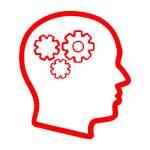Curriculum
The future is Bilingual

To see every subject from two angles. To shape every skill from two mindsets. These are the gifts we strive to instill every day in our bilingual Elementary program, in these critical years when students build the foundation for future learning.
Our Elementary curriculum provides the structure to bring out the best in every child, bringing together the content-rich system of the French Ministry of National Education with the inquiry-based approach of the U.S. Common Core, in both group and individualized learning opportunities. Native-speaking teachers guide each class through Humanities, Math, and Science in both English and French.
Personalized programs then take advantage of our high teacher-to-student ratio, allowing students to dig deeper into areas they find challenging, or expand further in those where they display aptitude and interest.
Explore Our Year 1 Curriculum
Select subject icon to find out more
Language Arts
American System
English Language Arts for Grade 1 focuses on Reading and Writing. Through read aloud and shared reading exercises, we engage in word study, including Phonics, Spelling, Vocabulary, Grammar, and Dictation. Writing Workshops allow students to practice new knowledge, as well as their print handwriting skills, cover all the lower and upper case letters.
French System
Children in Grade 1 learn to read and write sounds, using the French cursive script, to construct syllables to decipher words and sentences. In parallel to the syllabic method, the programs also focus on reading comprehension of small texts. The Pilotis method is used for reading comprehension and study of sounds.
Social Studies
American System
1st Grade Social Studies in English introduces students to the idea of “Community”. Through explorations of the world and the people and animals who inhabit it—and the relationships between them—students gain an understanding of how to think about and answer the fundamental, foundational question, “What is all around me?”
French System
In Grade 1, children will acquire the foundation of Civic and Moral Education. They will participate every week in philosophical workshops, on a specific theme, leading to a debate at the end of the week.
Maths
American System
Math in English for Grade 1 focuses on addition and subtraction of small numbers, with an exploration of numbers up to 100, and the basics of measurement and geometry as well as data collection and pattern recognition. Number games and story problems are a key element of coursework, and all concepts are reinforced through hands-on activities.
French System
In Grade 1, using the Method of Singapore, students will learn the numbers up to 100, the additions in columns with carrying, the linear subtractions. In geometry, they will learn to recognize shapes and use a ruler. They will practice measurement with standards than with cm and compare weights and lengths. They will learn to organize and manage data.
Science
American System
During the weekly bilingual time, children in Grade 1 will explore the notion of Time, Space, and the Environment. They will learn to identify the day, week, month and year, and comprehend distance (from very close to very far). Students will study the living world, the water, the plants, and the way the human body grows.
French System
During the weekly bilingual time, children in Grade 1 will explore the notion of Time, Space, and the Environment. They will learn to identify the day, week, month and year, and comprehend distance (from very close to very far). Students will study the living world, the water, the plants, and the way the human body grows.
Literature
Because of the phonics foundation our students acquire in preschool and kindergarten, they are able to begin independently reading works with more complex themes, characters, and plots. We read books together in class, examining literary elements such as character, plot, setting, and main idea. Through discussing the stories, students begin to understand the relationship between choices and consequences.
Logic
We practice the principle that the purpose of education is to teach a child how to think, not what to think. Our logic lessons provide students an opportunity to explore the world using rationality and logic. Our students further their critical thinking skills and explore new logic concepts such as observing, patterns, analogies, predicting, and divergent thinking.
Explore Our Year 2 Curriculum
Select subject icon to find out more
Language Arts
American System
English Language Arts for Grade 2 focuses on Reading and Writing. Through independent reading and read aloud exercises, we practice skills and strategies to ensure comprehension, enable interpretation, and develop vocabulary. In Writing, we explore basic conventions of English grammar, including punctuation and parts of speech, as well as spelling.
French System
In Grade 2, the focus is on language, reading, and writing—strengthening the skills that have been acquired in Grade 1.
In Reading, as they have learned to decode the sounds of language, it will be time to focus on the meaning of the text.
In Writing, students are led to create their first writing samples, using the French cursive script. During this year, we begin the study of basic grammar and vocabulary in order to better understand the language.
Social Studies
American System
Year 2 Social Studies in English expands on the simple idea of “Community” introduced in 1st Grade, helping students develop the basic knowledge and skills to explore the broader concepts of history, culture, economics, government, and civics. Students will also deepen their understanding of their place in the world through a focus on geography, and particularly, the use of maps.
French System
Social Studies (Histoire Géographie) in French in Grade 2 is part of a wider subject: “Questioning the World”. There are two general objectives: enable students to acquire the necessary knowledge to describe and understand the world around them and develop their reasoning skills; contribute to their development as citizens.
Maths
American System
Math in English for Grade 2 focuses on more complex addition and subtraction relationships and strategies, including place value explorations of tens and ones, grouping by 2, 5, and 10, odd and even numbers, and patterns to 100, and deepens student’s investigation into data collection and graphing as well as measurement and geometry. Key concepts are reinforced and connected to the real world by working with money.
French System
Grade 2 is about searching, modeling, representing, reasoning, calculating, and communicating. The objectives are the mastery of the main elements of numeration and calculation, problem solving and acquisition of mechanisms. Children will be able to count to 1,000. They will start to master decimal numeration and addition and begin to learn both multiplication and subtraction. They will recognize and build simple geometric figures, learn measurements of length, weight, time and money, and will acquire data management knowledge such as tables, graphs, and problem-solving.
Science
American System
Science in English for 2nd Grade is focused on the physical environment, here on Earth and in space. Students will participate in group projects that they will present to other students and parents during the yearly science fair.
French System
Science in French in Grade 2 is part of a wider subject: “Questioning the World”. The general objectives are: first, to enable students to acquire the necessary knowledge to describe and understand the world around them and develop their reasoning skills; second: to contribute to their formation of citizens. Students will discover the world of life, the matter, and objects (Sciences), they will explore space/time and the world’s organizations (Histoire Géographie).
Literature
Because we start reading when students’ brains are wired best for language acquisition and use phonics to provide them with the skills to decode words, our students are able to read and comprehend at a higher level than typical second graders.
Logic
At Bells and Bridges we knows that logic underlies learning in any field. In second grade, students expand their critical thinking skills and practice using mental imagery and deductive reasoning to study generalizing, patterning, classifying, and problem solving. For example, they use spatial reasoning to deduce the relationships between objects on a map, and they arrange numbers and objects into groups in order to balance their sums.






